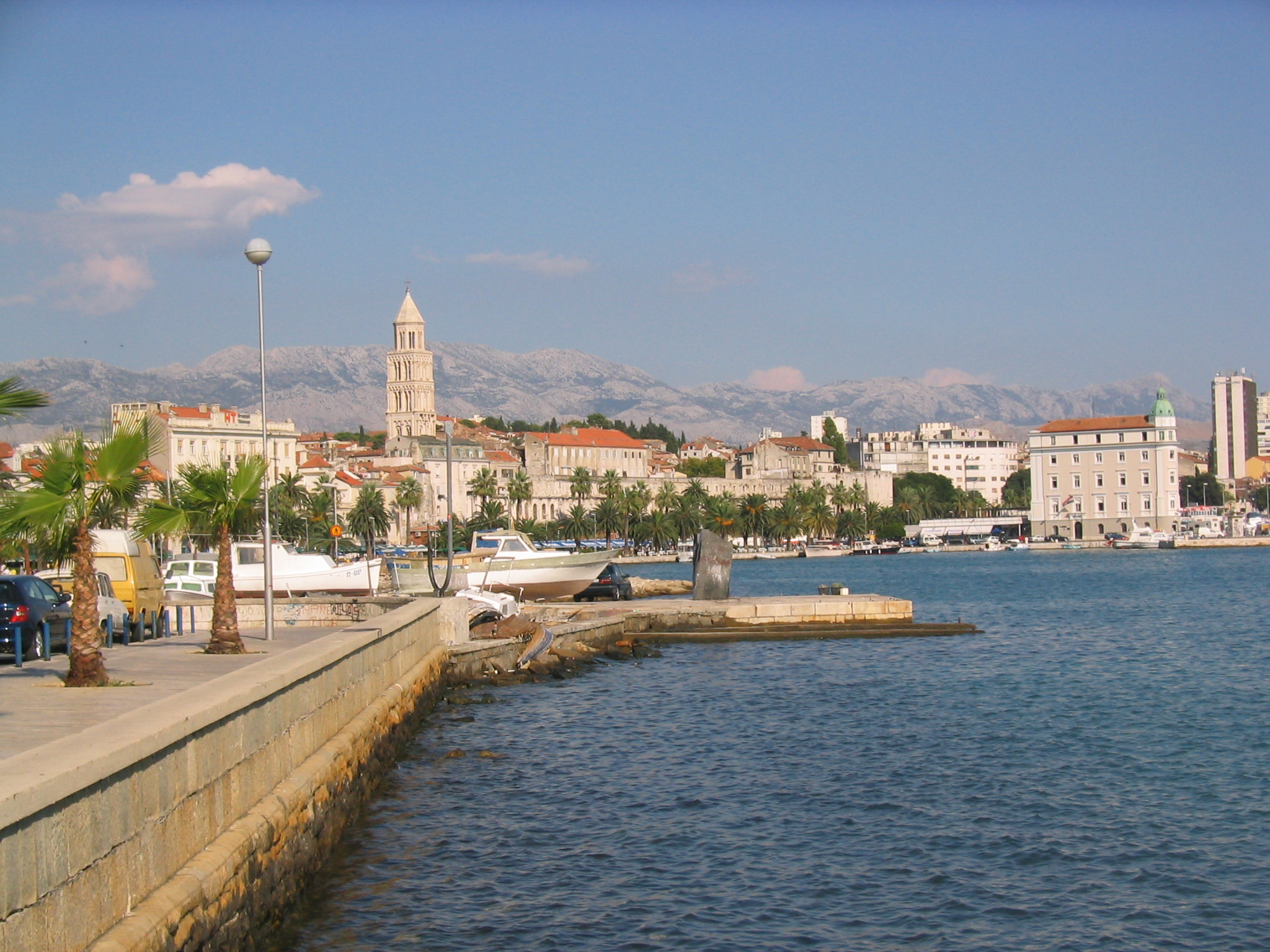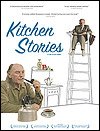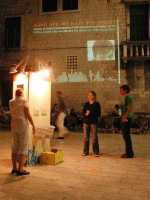
Interaction Design Summer School, Split, Croatia, 2004

Lectures - overview:
Projects:
Lectures - description:
Mirko Petric
Invisible cities: Digital Revolution and the Decline of Urban Form
Cities in the way they were meant to be, a place of encounter with other people, are becoming invisible («more and more cities, but less and less urban form»). This is happening both in developed countries and in developing countries.
In developing countries, this is due to informal hypergrowth. Cities expand in an uncontrolled manner, regardless of urban planning and providing space for citizens to convene.
In developed countries, it is called hypercapitalism. Public space, which everyone can use, is being reduced to commercial space, which can only be used if sth is consumed within that space.
Additional causes for the loss of urban form are:
- the car and the motorways, which allow distances to become much bigger. People travel along these individually, with a clear goal, and no chance of meeting others along the way
- Mass media, which bring information to the people’s homes, reducing the need to go out and seek information
The digital revolution.
This latter constitutes the end of urban culture as we know it. There is a form of delocalization (P. Vinlio), electronic solitude (Agentur Bilwet) and the problem of the daily me vs the daily we:
--> no serendipitous encounters of news that might have been of interest, but is not in our profile.
--> very egoistical viewpoint
HOWEVER:
«technology enables change, doesn't drive it» (Paul Saffro). Eventually, we are responsible for the way community changes, it is the result of our behaviour, so it does not do to blame everything on technology itself.
Further, technology can create a feeling of community, not just divide the people.
Notion of sustainable tourism:
Sustainable tourism should bring tourists to a place without inflicting permanent harm, but still bringing money and means to survive to the local population.

Mirko Petric
Beyond Visual: Interaction Design and Identity Creation
The lecture gave some insight about interaction design, together with problems and definitions.
One of the proposed definitions:
"Interaction design is an art of facilitating and instigating interactions between humans or other agents
mediated by products" Dan Suffer.
The main point of contrast was interaction design vs. HCI where the last was defined as "engineering approach
for computer interfaces". The discussion emerge around the issue of the importance of [visual] identity for
interaction design.
Visual identity is increasingly important, people are judged by their appearance. We are a «gesamtkunstwerk», thinking about every detail. With visual cues we show our identity that we want others to perceive. It is important to behave consistently with our image so people can judge us/ understand our actions. Every action is interpreted in the light of the image people have of a personal or corporate identity. Visual vehicles are logos, signs, typography, architecture, dress code, uniforms...
Claim: modernism = visual culture.
Interaction design = beyond the visual, creating a space of involvement and immersion.
Interaction = important for identity.
Definition of interaction has changed from concerning people to concerning objects (1913 - 2004). Definitions often contain references to systems (e.g. interaction design should show a system's functionality). What do we want? Concentrate on people or objects? What actions go beyond the visual?

Bosse Westerlund
Designing Interactive Intergenerational Interfaces for Living Together
Bosse presented ideas behind the
interLiving project and its results. The Interliving project had the goal to improve the communication between three generations within a family.
To achieve the goal of building a prototype of a useful home device different approaches
to understanding families and their internal activities were applied (Cultural probes, technology probes, workshops).
For capturing characteristics of the families taking part in the experiment the researchers proposed
different opportunities to capture information about their daily communication, activities,
house rules etc.:
- communication diary;
- notebook;
- camera for making photos of places where you leave notes to others, places that remind you of others,
things family members find nice in their homes
From the data captured and also from observing family members behaviour the researchers derived a list
of communication problems. A number of prototypes were proposed and tested:
- door screen which shows left messages
- video and photo capturing devices
- software for notes distribution
One conclusion was a good way to involve children in the research: provide them with means to record situations/impressions, eg. with a Polaroid camera, and give them complete freedom with it.


The film was shown to us partially with the motivation to introduce us to the concept of ethnography
(the study and systematic recording of human cultures).
It is definitelly a very original piece which involves the whole range of emotions. It is a comedy and a
drama in the same time. For me the most dominating was the theme of loneliness in the movie which is not overwhelming though, since
it was nicely compensated by warmness of friendship between the characters.

Yngve Sundblad
Historical talk (justified by Yngve's age)
This stuck:
- A webpage showing short videos of Doug Engelbart demonstrating the use of the mouse to people from research and industry in 1968.
- A game idea: the WHO, WHERE, WHAT dice
3 dice, 1 with who, 1 with where, 1 with what. Roll the dice, make up a story. You can make the content on the dice up yourself. We used this technique in our project at the end of brainstorm day to structure the thoughts we had had according to What, When, Who, Where and Why.

Riccardo Antonini
The darwinian structure of the design process
The basis for the talk is the "original" paper by the presenter, whose intention was
to stimulate a discussion around the statement: "any creative process is a darwinian one and
any rational procedure aimed at its optimization (e.g. design) is just a different from of the process
that is still of darwinist nature". I'm still wondering whether it is a great discovery...

Peter Tolmie
Investigating Human Practice for Design
Many methods about collecting information about real world activity to be able to really take the user into account (e.g. compliance documents, focus groups, probes, user diaries, machine usage monitoring and logs, interviews, installed cameras, in situ observation).
Perspectives on studying the user, that underlie the methods described before (e.g. cognitive work analysis, participatory design, contextual design, interaction analysis, ethnomethodologically-informed ethnography).

Peter Tolmie
Historical development of ethnography
- Anthropology: access native's point of view from the inside by living their life, joining their community. Malinowski called this «ethnography».
- Sociology: looking at very complex societies (as opposed to what?? Not clear to me.) Chicago school, E. C. Hughes. «information is currency within work place»!!
- Ethnomethodology: investigating in a non-presumptive, pre-theoretical way. Wittgenstein («look and see», find the facts in the world, how are they established), Husserl, Schulz, Garfinkel (study what people do in situations by finding the order, the reasoning), Sacks.
Work practice at XEROX parc:
Engage anthropologists to make user studies to improve design. --> evolution of Lancaster School.
How to analyse:
Ask the right questions
Discover the reasoning behind behaviour, knowledge in context of activity.
Results of analysis:
Report for other researchers, marketers, consultants
Provide collaboration resources to design teams during actual process of design through conversation (tacit K!).

Panu Korhonen
Invisible but Invaluable - Interaction Design in the Industry
Panu Korhonen is the leader of usability group of
the NOKIA research center. He presented his perspective about the current state of the art with Interaction
Design issues and a role of interaction designer. Since interaction design is involved into different areas
of manufacturing a product (technology, marketing, design, users), its function appears to be intangible and
the role of an interaction designer is not clearly identified (yet?).
Some tips and tricks for an interaction designer:
- be concrete, not fuzzy
- avoid funny industrial design pictures
- be neutral, rely on data
- talk business
- give good design talks
User experience consists of:
- wow: first impression
- flow: the flow of use: does the product fit the expectations?
- show: does it let the user to achieve his goals?
Interaction with household appliances will change because of the mobile phone! Mobile phones are pervasive in the world (ca. 5-6 million phones in circulation). People have learned how to use them, so now similar interfaces can be introduced to other products, eg. washing machines, microwave ovens etc.
Mobile phones are emotional devices, they contain very personal information, contact to dearest people. Therefore mobile phone designers have a great responsibility.
The Interaction Designer role is unclear. Comparison with Industrial Designer:
The latter reflects the mood/attitude/lifestyle of the target group, the former reflects equally the behaviour of these people. Interaction designers advocate users in product- and UI-discussions.
Biggest challenge of an Interaction Designer:
Get the message of the product vision intact down through the whole process of product development. --> check at each stage of the process.

Thomas Rist and Elisabeth Andre
Embodied Conversational Agents
They represented a change in the metaphor: from HCI to HHI, which means that there is a switch from
interaction with a computer to human-to-human interaction via personalized agents. Some links:
www.blaxxun.com, www.osaka.com, www.shopping24.de, www.bonzi.com/bonzibuddy
They presented agents created in their lab which could change moods and attitudes. Currently they are investigating
the influence of various agent attitudes on users.
In the second part of the lecture Elisabeth presented her current research which has the objective to build
a polite embodied conversational agent. For that she is trying to identify multi-modal conversational behaviour
in human-human interaction and to incorporate its characteristics into agents. The evaluation has shown
interesting results. The agents were developed in a way that they could fake emotions. Users interacting with these agents
could say whether they like or dislike a particular agent but they were not able to say why. This leads to a conclusion
that people are so used to hypocrisy which is till the certain extent is the norm of social behaviour that
we are not able to recognize unhonesty in others.
In the discussion they got a very confrontational question: how they dare to come to an Interaction Design summer school and talk about embodied agents. Who needs the additional layer between a human and a computer? They didn't seem offended.

Michael Smyth
Artefacts, Places and Interaction Design
We think about the technology from the way we interact with it. The medium we choose to express our ideas
is bound to how that information is received, interpreted and understood. The choice of media influences
the way we think about the nature and process of problem solving.
The study of creative practice:
- focus on architectural practice as an example of creative practice;
- tool-based approach: focus on interdependency between freehand drawings, physical model and
computer aided design (CAD).
The aim of the CAD is to produce different designs of undefined objects to help designers think.
Physical models enable the consideration of design issues of the whole building (in contrast with more limited
views on freehand drawings).
Suggested literature:
- Lakoff and Johnson, Philosophy in the Flesh, 1999.
- Franck K., Bodies as Objects, Bodies as Subjects, 1998.

Projects:
Ajmo Splite!!
 Ajmo Splite!!
Ajmo Splite!! Project became popular in croatian newspapers

Fluid Walks
My project group consisted of 11 people with very different backgrounds. We did not have a definitive problem or challenge to solve, so we had to come up with that first. At the end of the first week we had the challenge:
To be able to explore a city from a different perspective/with a different identity, and to share experiences indirectly/unobtrusively with other people.
In the second week we developed the concept of Fluid Walks:
leave traces, share experiences, reveal your identity to others.
Fluid Walks is a service that allows people to leave messages in any format in a certain place. We call the messages Digital Grafittis, because they are bound to the location where they are left. These messages can be anything, hints, tips, directions, stories, ideas, opinions, feelings. When other people pass the spot where a Digital Grafitti hangs in space, they are notified and can view the message on their mobile device. It is purely serendipitous whether one encounters a Digital Grafitti or not. An advanced use of the system is to consciously follow the traces of an individual by knowing all locations where one author left a Digital Grafitti. This is what we call a Fluid Walk.
A possible way to get the project started and test its use is to try a low profile version of the concept with real tangible cards lying around at cafe's. People can write messages on these cards and read the messages left by others while they are enjoying a cup of coffee. This is possible in Split because they have a very sophisticated coffee culture and many cozy cafe's to sit down at.
Another element of the concept is to set up a central meeting point where the Digital Grafittis that are in space are projected onto a surface. Here people can convene, see all the messages and make contact with the other people.
The advantages of the approach in our team are that the work is very creative and the outcome interesting and unexpected. The disadvantages are that it is quite time-consuming and not goal-oriented.
The group process of coming up with this concept is documented in a flash presentation made by Tracee Wolf.
The complete concept is described in the powerpoint presentation composed by me.
There are 4 movies that serve to illustrate the concept:
A hint at the market shows a basic use of the concept, and how it can be of valuable use. A second video highlights an important element out of the first video. They should ideally be played simultaneously. If this is not possible, play the second video first.
Another Beer-Coaster Collector shows the advanced use of the concept, leaving a trail of traces that like-minded people can follow, if they happen to come across it. This also has a supporting second video, that should be viewed first if it cannot be viewed simultaneously.

Comments:
My general impression of the summer school was very good. Together with the opportunity
to meet interesting people with different backgrounds (designers, interaction designers, CHI people,
computer scientists) the summer school offered engaging lectures. Many of the subjects presentated during the lectures
I would never hear about at the conferences we go to. It was intersting to know what projects
people who are not computer scientists are involved in. Our practical work was a great idea and
I think also a great success. We had to work in the really close cooperation with all the atelier
members and to use our various skills to make our final delivery possible. The fact that the summer
school lasts for 2 weeks I see as a big advantage since it gives enough time to get to know people
and to make contacts together with being able to concentrate on the work. It was very inspirational for me
and I would definitelly recommend it.
I was interested in the summer schoolfor two reasons. One was to learn methods for interactively incorporating the user in the design of a solution (to a knowledge related problem, in my case). The other was to experience the summer school as a method for sharing knowledge, and to learn the requirements, pitfalls and benefits of such an event. For me, the benefits of this summer school were the following:
- networking, meeting people from different backgrounds with similar interests
- testing collaboration methods in multicultural and interdisciplinary teams for problem and solution finding in a no-pressure environment
- sharing knowledge on current "hot topics" in different communities, e.g.at this summer school it was "ethnography". there is really no better way to share this much knowledge with so many people in such a short time period!
- seeing the perspective of professionals from other backgrounds to the similar problems
by Katya, 20 Sept 2004 / by Katharina, 08. October 2004
 Ajmo Splite!!
Ajmo Splite!!













 Ajmo Splite!!
Ajmo Splite!!
